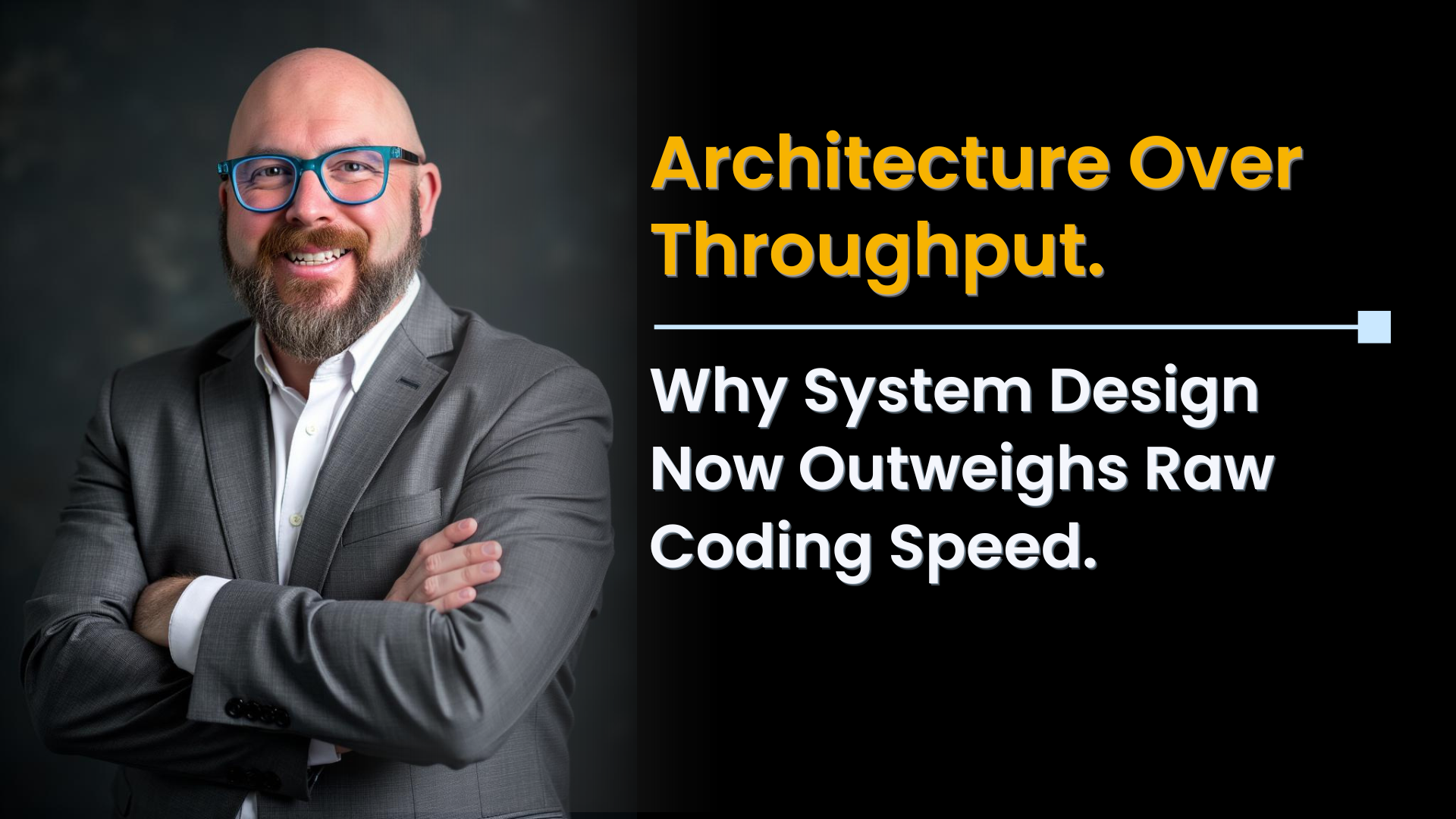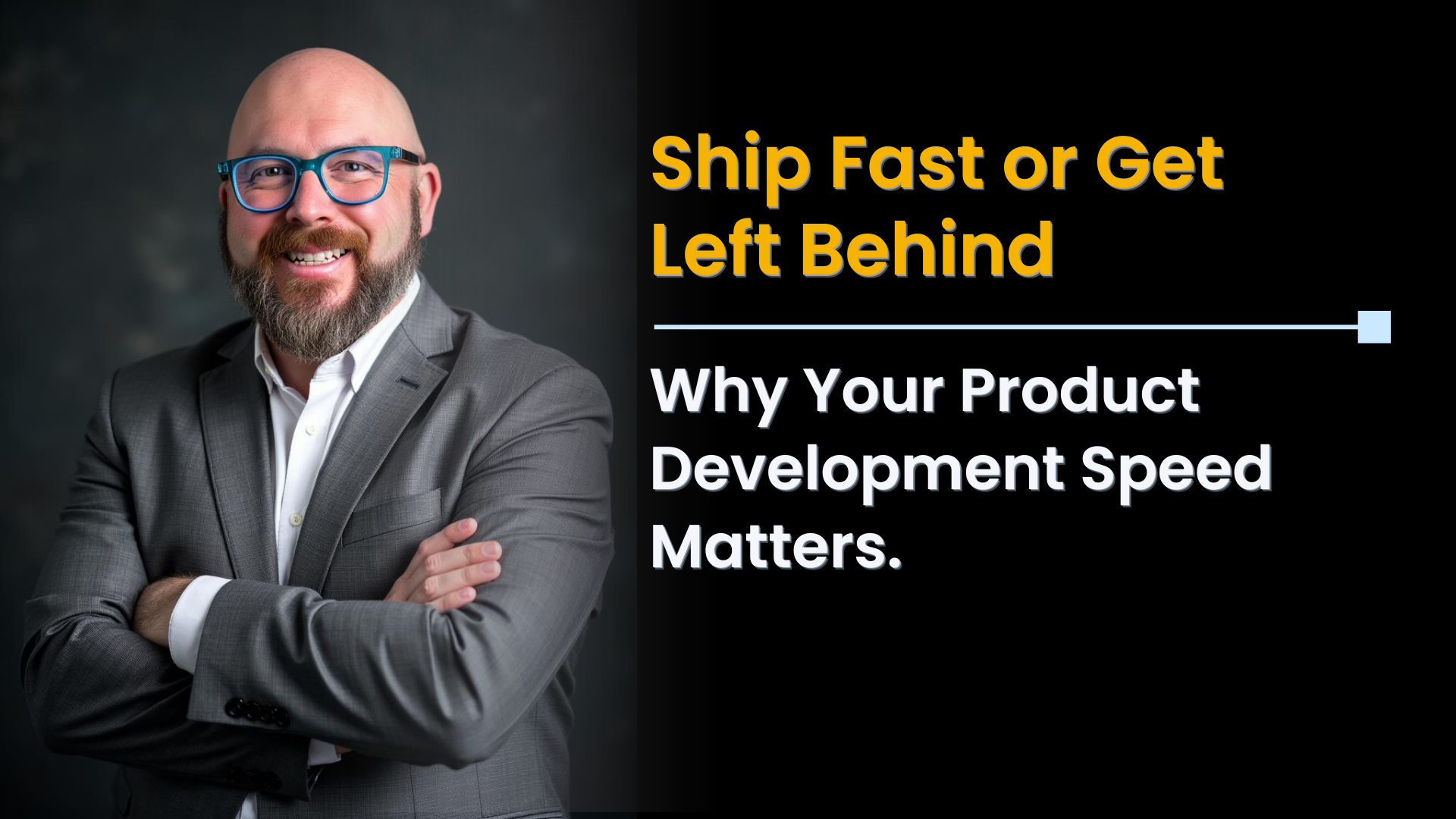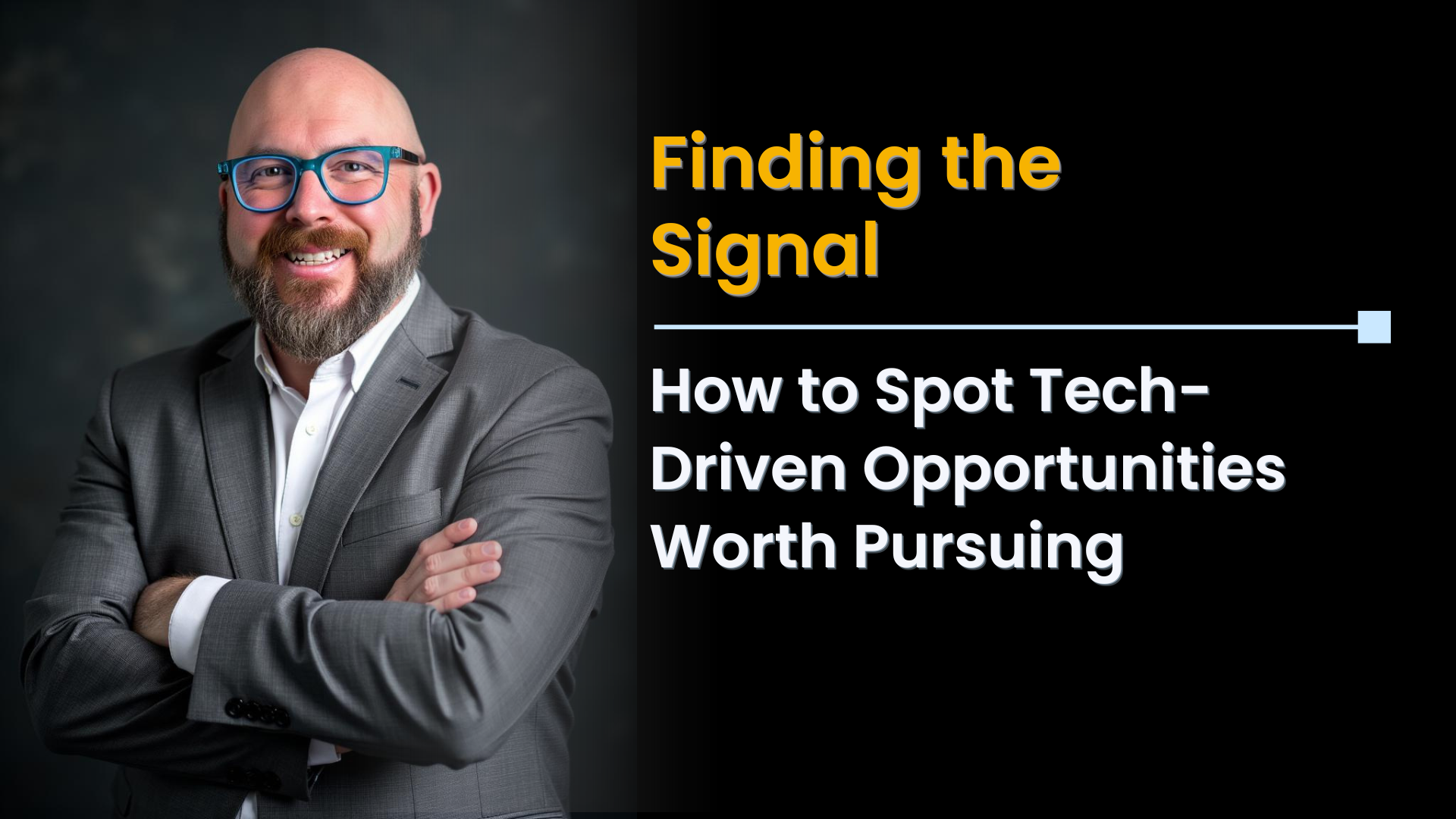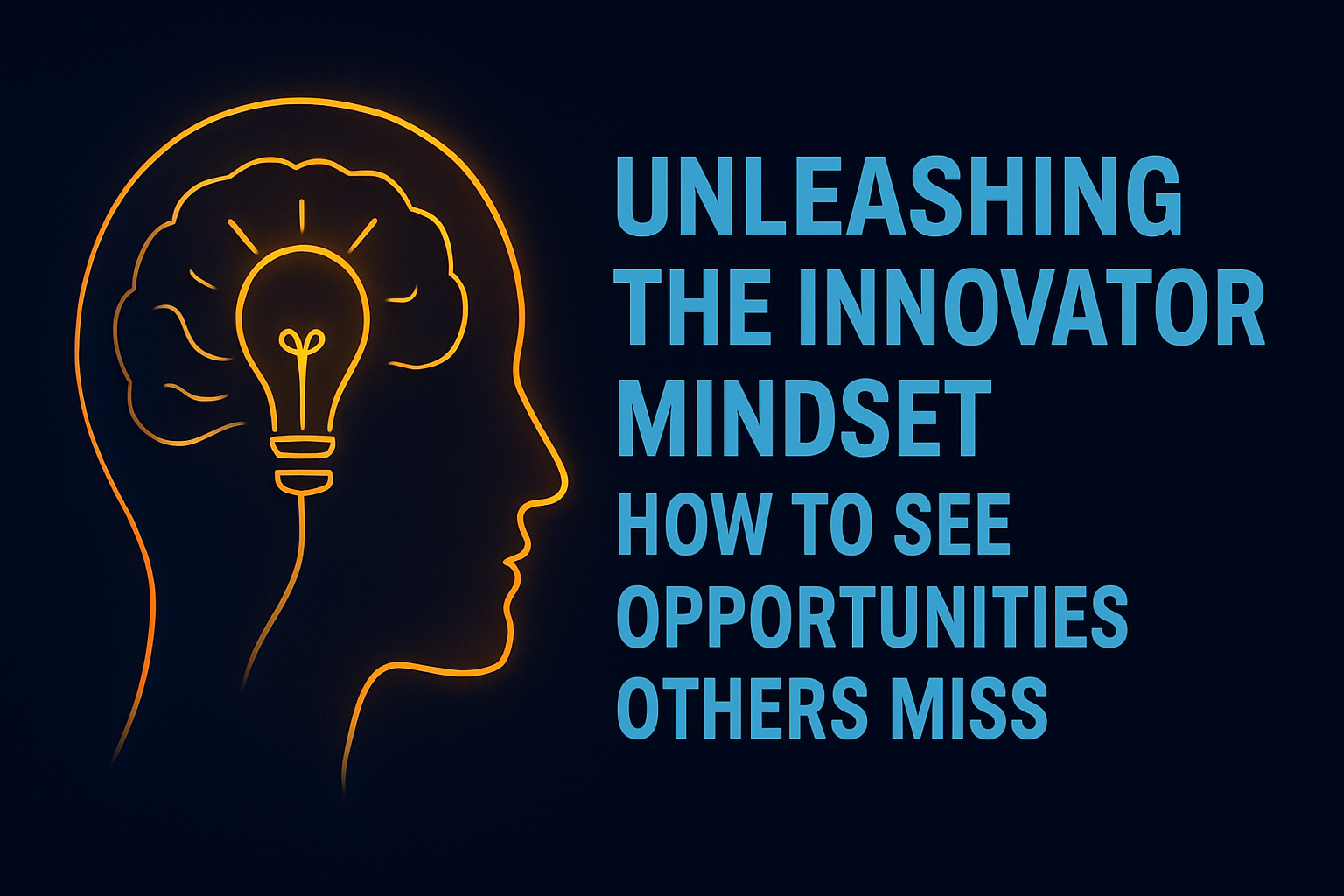
No Heroics: How do we know Agile is working?
By looking at sustainable development.
What do I mean by that? It’s the pace of work a team can maintain—not just for a sprint or two, but for months and years—without burning out, without late nights, without the constant cycle of “just one more push.”

Architecture Over Throughput: Why System Design Now Outweighs Raw Coding Speed
In the cloud/AI era, feature velocity without architectural vision is just accelerating into a wall.
If it feels like the pace of technology change has gone from fast to unreasonable, it’s not your imagination.
In the last 15 years:
Cloud evolved from niche to default, spawning thousands of services—each with its own economics, operational quirks, and integration risks.
Mobile reshaped the user experience frontier, forcing backends to handle intermittent connectivity, billions of devices, and wildly varied operating systems.
Generative AI emerged from research labs into mainstream workflows in under two years, promising significant productivity gains but bringing new security, compliance, and architectural challenges.
The speed of adoption is breathtaking and unforgiving.

Ship Fast or Get Left Behind: Why Your Product Development Speed Matters
Look at how fast things move now. ChatGPT went from zero to everywhere in under a year. New JavaScript frameworks pop up monthly. Companies that took decades to build are getting disrupted by startups that move faster.
Here's the brutal truth: having good ideas isn't enough anymore. You need to act on them before someone else does.

Finding the Signal: How to Spot Tech-Driven Opportunities Worth Pursuing
Emerging technology continues to emerge faster, louder, and with bigger promises. But while the hype cycles spin faster than ever, most organizations still struggle to answer a fundamental question: Which of these tech-driven ideas are actually worth our time?
It’s not a shortage of ideas that holds teams back—it’s the inability to cut through noise, make confident calls, and validate where new technology could create real value. As a result, we encounter the usual pitfalls: trend-chasing, analysis paralysis, wasteful investment, and missed windows of opportunity.

New Tech Is Everywhere. The Hard Part Is Shipping the Right Product.
Emerging technologies promise transformation: faster development, smarter products, competitive edge. But too often, those promises turn into broken ones. Not because the tech didn’t work, but because the organization didn’t know how to capture the value.
Future-Proof Leadership: Why Mindset Agility is Your Greatest Asset
The pace of innovation isn’t slowing down. AI, quantum computing, decentralized systems—what feels cutting-edge today will be table stakes tomorrow.
In this environment, frameworks and tools will evolve. Markets will shift. But one leadership trait will remain timeless: Mindset Agility.

The Balancing Act: How Great Leaders Dance Between Innovation and Investment
If you've ever felt torn between chasing bold ideas and playing it safe, you're not alone. The tension between innovation and risk management is a constant in product leadership.
The best leaders don’t eliminate this tension—they leverage it.
Welcome to the art of balancing the Innovator and Investor mindsets.

Rethinking the Query: The Rise of AI-Enabled Web Search
AI-enabled web search refers to the use of artificial intelligence, especially large language models (LLMs), to deliver search results in a more conversational, contextual, and direct way. Instead of offering a ranked list of links like traditional search engines, AI-powered search engines synthesize and generate responses, making them feel more like expert assistants than digital librarians.
From Office Heroics to Healthy Workplaces: Rethinking Recognition
I recently read a post on LinkedIn describing two men deserted on an island. One immediately builds a raft and makes a plan. The other writes HELP in the sand and waits. The point the author was making was agency vs. complacency. Agency is owning your own destiny and your situation. Take the lead, act, don't hesitate, be the hero.
Most people agreed with that post, but I take the opposite position. We shouldn’t need to be heroes in our everyday lives, especially at work. This post, to me, is the basis of the HERO mindset. No, I’m not advocating that we ask for help and simply wait, hear me out.

The Investor Mindset: Turning Tech Dreams into Sustainable Business Value
It’s easy to get swept up in the excitement of emerging technology. Bold ideas, cutting-edge tools, and ambitious visions fuel the early stages of product discovery.
But once the brainstorming fades, one question remains: Is this idea actually worth pursuing?
This is where the Investor mindset takes center stage.

Building Software in the Age of Vibes
There’s a new kind of software development sweeping through startups and strategy decks alike. It’s fast. It’s weird. It kind of works. And if you squint, it might be the beginning of a new programming paradigm.
They call it vibe coding. Think prompt-based development where human developers act more like directors than builders—describing what they want, and trusting the AI to deliver the goods. Sometimes it does. Sometimes it… really doesn’t.

When Bold Ideas Meet Reality: Mastering the Shift to the Investor Mindset
Innovation is exhilarating. There’s a certain adrenaline rush when ideas are flowing, possibilities seem endless, and emerging technology feels like a blank canvas.
But at some point, every product leader hits a critical juncture—the moment where inspiration must give way to interrogation.
This is where you shift from the Innovator mindset to the Investor mindset.

Unleashing the Innovator Mindset: How to See Opportunities Others Miss
In a world where technology evolves faster than most organizations can adapt, survival belongs to those who don’t just use emerging tech—but reimagine what’s possible with it.
That’s the domain of the Innovator mindset.
While others ask, “How can we apply this technology to what we already do?”, the Innovator asks, “What could we do now that was never possible before?”
This isn’t about chasing trends—it’s about seeing opportunities hidden in plain sight.
Agile Is a Mindset
At first glance, doing Agile can look like success: your teams are running stand-ups, managing sprints, writing user stories, and holding retrospectives. The frameworks are in place. Boxes are checked. But here’s the reality—doing Agile doesn’t guarantee agility.

The Twin Mindsets Every Product Leader Needs in a Tech-Driven World
There’s a quiet truth lurking beneath every breakthrough product and every failed innovation: Mindset determines trajectory.
In an era where technologies like AI, IoT, and cloud platforms evolve faster than most roadmaps can keep up, product leaders aren’t just tasked with shipping features—they're navigating uncharted territory. The rules are being rewritten in real time. And in this environment, success doesn’t belong to those who merely react to change, but to those who wield the right mental frameworks to harness it.
Welcome to the world of the Innovator and Investor mindsets—the two lenses every technology leader must master to turn emerging tech into real-world value.

MCP and the Future of AI Integration
Imagine if your AI assistant could not only understand your requests but also seamlessly interact with your tools and data—without custom integrations. Enter the Model Context Protocol (MCP), an emerging standard that's poised to revolutionize AI integration.
Is Agile Dying?
Agile’s been around for about 25 years now—officially kicking off in 2001 with the Agile Manifesto. Since then, it’s evolved into all sorts of frameworks like Scrum, Kanban, and others. We've seen some teams knock it out of the park, and others... not so much. So the big question is: is Agile on its way out?
Generative AI: A Commodity, Not A Unique Proposition
In today's era of digital transformation, everyone is sprinting to harness the power of generative AI. Indeed, it seems as though the "AI train" has left the station, and those not on board risk being left behind. It's an exciting period, mirroring the foundational shifts of the internet and cloud computing. But amidst the enthusiasm, it's crucial to remember an old adage: "if everyone is special, no one is special."
The question arises: has generative AI become a mere differentiator, or is it now table-stakes?
Attainability: the third of three critical foundations for technology strategy and architecture in a fast-changing world
When we speak about attainability in technology and product development, we are thinking of some particular questions. is it possible? Can it be done in a reasonable timeframe? Can it be done at a reasonable cost? The answers to these questions will assist you in understanding the attainability of a particular initiative. However, you can take actions both in strategy and architecture to improve the attainability of new capabilities.
Adaptability: the second of three critical foundations for technology strategy and architecture in a fast-changing world
Adaptability is about building in the ability to change your systems and strategies as the changes occur quickly. Can you quickly adapt it if your cloud provider releases a new service that can cut your operations costs in half? Or, have you poured virtual concrete around your architectures and strategies such that they are complex, slow, and costly to change?
